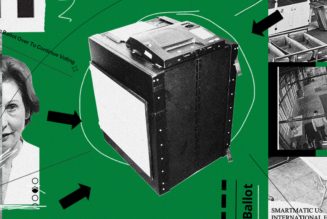The hardware is chunky and the software is clunky, but this is the best portable audio player I’ve ever heard.
Do you want to hear the best-sounding portable music player in creation? Something that plays your favorite songs better than you’ve ever heard them? Do you have an extra $3,000, another couple grand worth of headphones, and a high tolerance for bulky hardware and laggy software? If you said yes to all of the above, then Astell & Kern’s flagship digital audio player — the SP3000T — is about to make your sonic dreams come true.
Analog stalwarts write love letters to the warm, natural, lifelike sound of the tube amp; proponents of solid-state digital amplifiers praise their precision and faithful reproduction of the source material. But why choose? Alongside a peerless digital op amp, the SP3000T has an honest-to-goodness tube amp, complete with a pair of vintage Raytheon JAN6418 vacuum tubes. Tube amps are generally only found in much larger home hi-fi equipment, so integrating them into something that (barely) fits in your pocket is a serious feat of engineering. And the SP3000T lets you choose between the digital amp, the tubes, or a hybrid mode with five different levels of crossover. The result is absolutely astonishing sound.
The SP3000T is a brick of a device, with the left and right edges sticking out a bit in shallow pyramids. It’s 3.33 inches wide, 5.57 inches tall, and 0.7 inches deep, and it weighs more than a pound — 17 ounces, or 18.5 ounces if you use the yellow calf leather case that comes with it. And you’ll want to, because those silver-plated steel edges and corners are uncomfortably sharp. I would genuinely be afraid of it tearing through a pocket without the case. Even with the case, it’s awkward, and if you’re wearing sweatpants, you’d better have the drawstring tied. Fortunately, the case looks good and makes it comfortable to hold, though it also obscures the four side buttons, rendering them almost useless. It has slight indents to show where they are, but they’re not nearly distinct enough to find by feel. The fact that it’s leather may also make this a nonstarter for vegans.
The 5.5-inch, 1080p touchscreen is bright enough to see on a sunny day and sharp enough for album art to look good. On the left side of the device are four small buttons for play / pause, track forward, track back, and amp selection. On the right side is a chunky volume knob with LED underglow that changes color depending on the music bitrate. Up top, it has a standard 3.5mm unbalanced audio jack, 3.5mm optical output, and 2.5mm and 4.4mm balanced outputs, plus the power button. On the bottom, there’s a USB-C port and a microSD card slot. The back features a glass window that reveals the tube amps, lit by a red LED when they’re active. Because, I mean, if you’ve got it, flaunt it. The SP3000T even has a pair of (virtual) VU meters you can conjure with a tap, giving it even more of that vintage hi-fi aesthetic. It’s a nice touch.
The SP3000T runs on an eight-core Snapdragon 6125 processor, 8GB of DDR4 memory, and 256GB of built-in storage. You can add up to 1.5TB via the microSD card slot. It also has dual-band Wi-Fi and Bluetooth 5.0, which supports HD codecs like AptX HD, LDAC, and LHDC. It works with Roon ARC — if you have to ask, don’t worry about it — as well as whatever casting protocols are built into its streaming apps. It can even be used as a digital-to-analog converter (DAC) for your computer when connected via USB-C.

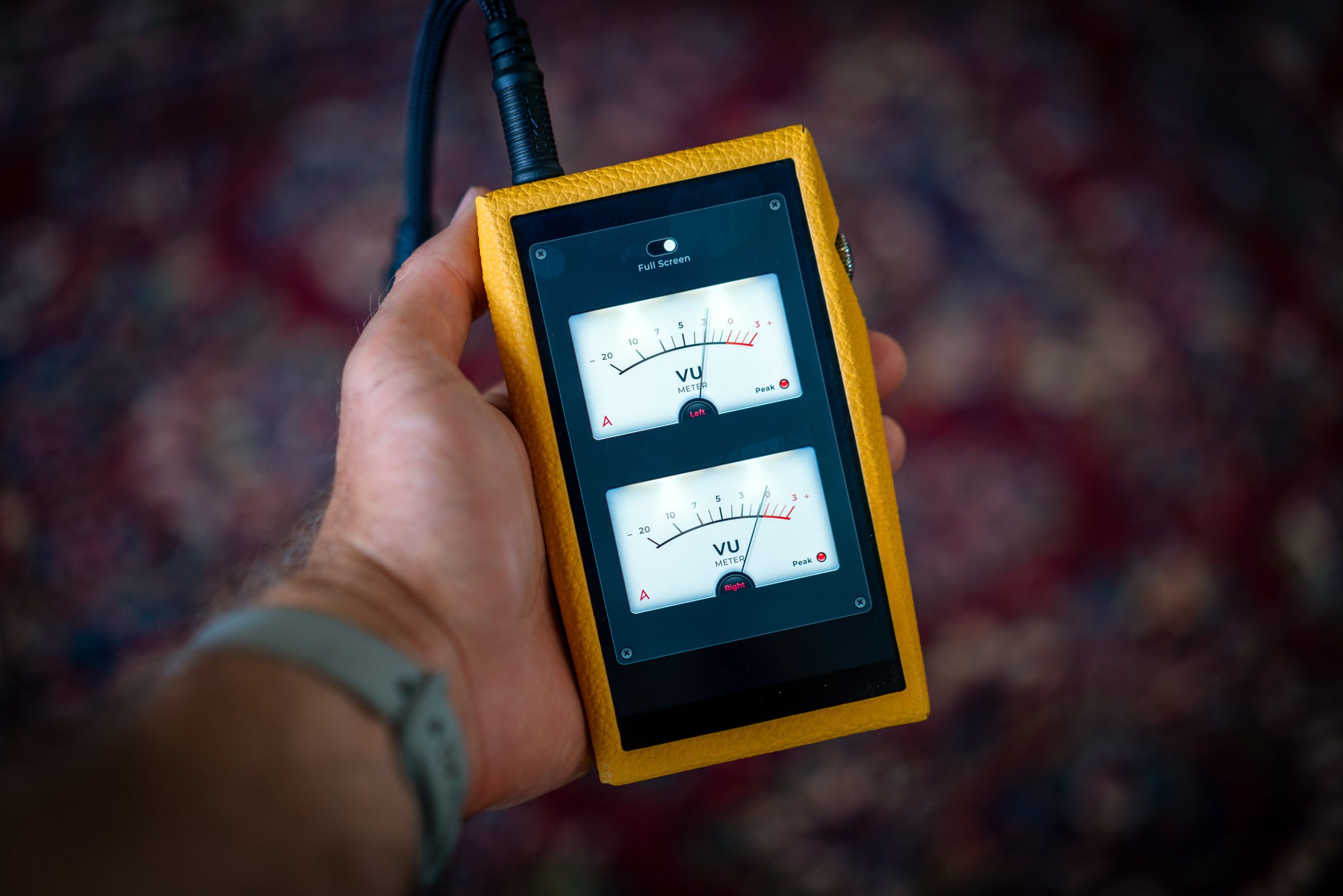
Astell & Kern has its own music-focused operating system based on Android 10, which came out in 2019. And if you’re expecting a $3,000 music player to run at least as smoothly as a $400 Android phone, prepare to be disappointed. It stutters pretty regularly when scrolling through lists, it often drops keystrokes when you’re typing, and the interface is unintuitive and buggy. Settings take too many swipes and taps to get to, and some are plain broken: under Downloads, you can choose “default folder” or “selected folder,” but there’s no way to actually select a folder. When I tried to log in to my Qobuz account using Google, the whole system kind of freaked out because it sensed that I was using an Android operating system, but there isn’t a way to log in to your Google account in the OS. Now I have an “Account action required” message in my notification tray that I can’t get rid of.
You won’t have access to Google’s apps or the Play Store, either, though you can download a limited selection of streaming apps like Spotify, Amazon Music, and Tidal through Astell & Kern’s onboard portal (and even then, they aren’t always up to date). If you’re hoping to add your favorite podcast or news app, you probably won’t see it there, though you may be able to sideload it. You probably shouldn’t, though; the less exposure this outdated OS has to the outside world, the better.
The other big issue is battery life. Astell & Kern claims it can get up to 10 hours under certain conditions in op-only mode, but in most cases, you’re going to want to at least be in hybrid mode. I did two battery run-down tests in hybrid mode, with two different sets of headphones, and got about 4.5 hours each time. That isn’t enough to last a full coast-to-coast flight across the US without using supplemental power.
All of that adds up to make it feel less portable than it ought to be. Yes, you can take it on the go, but not super comfortably, and maybe not for as long as you’d like. It’s portable but not necessarily made for your pocket.


But nobody’s buying this thing for its operating system or because their iPod kicked the bucket. They’re buying it for the sound, and the sound is sublime. The SP3000T features entirely separate systems for processing digital and analog signals, with two of Astell & Kern’s flagship DACs for each, which allows the right and left channels to be processed independently without interference. That effectively eliminates any potential noise between the two, which makes the player silent in between the musical notes you hear. Each system is in its own little silo. And because tube amps are delicate glass bulbs, each is housed in several layers of silicone to protect them from shock and dampen vibration. It seems to have worked because I didn’t notice any distortion while I was making the questionable choice of skateboarding around a parking lot with it in my pocket.
To appreciate the capabilities of a high-end digital audio player (DAP) like this, you need high-quality music sources as well as top-notch headphones. I used the SP3000T with both the Grado GS3000x over-ear headphones ($2,000) and the Ultimate Ears Premier custom in-ear monitors ($3,000), both of which I’ve used for testing other audio devices and both of which sound incredible. I listened to a mix of downloaded FLAC, PCM, and DSD files, plus HD and Ultra HD music streamed or downloaded from Qobuz and Amazon Music.

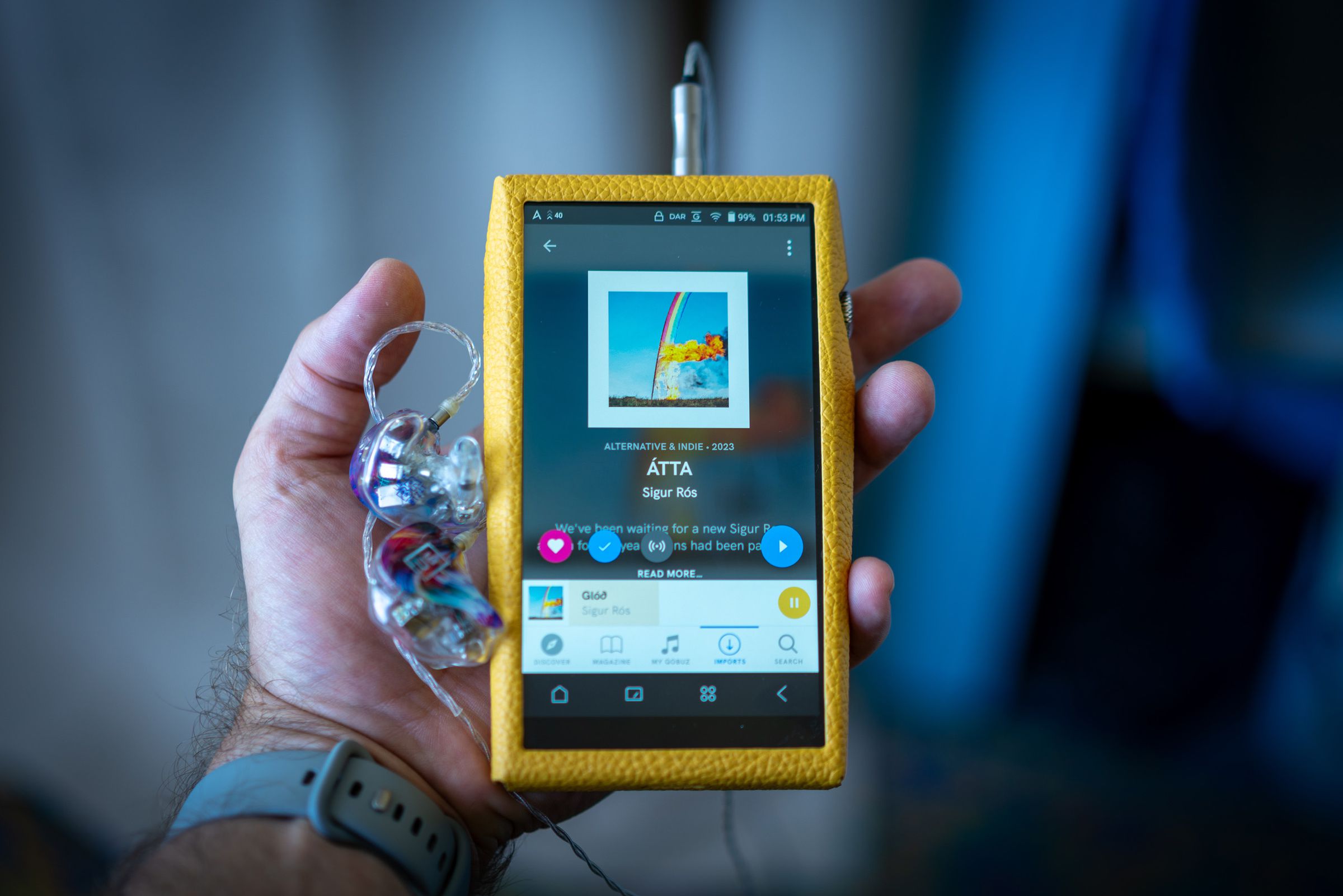
For a listening system as expensive as either of those setups, you would expect nothing short of magnificent, and the SP3000T doesn’t disappoint. Music comes across full, detailed, lively, and incredibly nuanced. If you’re coming from listening on your phone — even with good headphones — you’re going to hear things in your favorite songs that you’ve probably never noticed before. The scrape of a guitar pick, the subtle breath at the end of a sung line, nearly undetectable harmonics shining through. A really well-mastered album will come across like it sounded in the studio. In all my years of testing audio devices, I’ve never had anything transport with me quite like this (with the possible exception being the 15 minutes I spent listening to the $55,000 Sennheiser Orpheus headphones).
The differences between the digital and tube amps are striking. The digital amp is remarkably precise, with detail at the forefront. It’s as clean as reproduction gets. In full tube mode, what you lose in precision (and it isn’t much), you gain in liveliness. It feels like it moves more air, so bass, snares, and vocal plosives have more presence, and it has an inviting, warm sound. The hybrid mode, however, is the best of both worlds. You get digital accuracy married with that vintage tube sound, and it carries you away. The soundstage is broad and three-dimensional, and the emotion of the music really hits you.

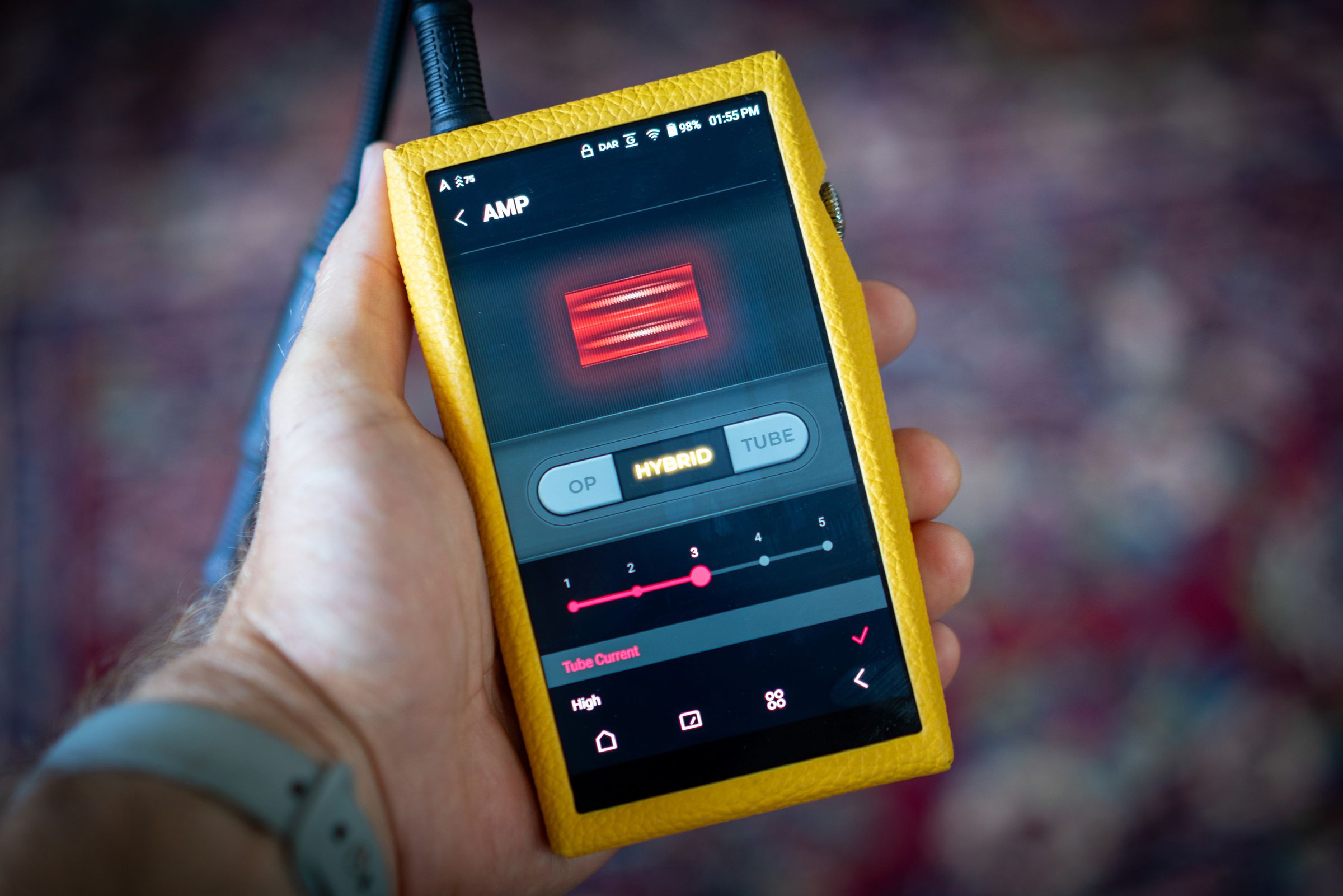
For classical music, I tend to prefer digital, but for classic rock like Fleetwood Mac, and especially for live performances, I go full tube amp. Listening to Jimi Hendrix live in tube mode with the Grado headphones is as close as I’ll ever get to hearing what it was like to be in the audience for one of his shows. That said, I kept it in hybrid mode most of the time because everything just sounds so good in it.
There are other ways to customize the sound, too. There’s an EQ (which I barely touched) and a proprietary Digital Audio Remaster option that effectively upscales lower-resolution music into either a PCM file up to 384kHz or a DSD up to 12.2MHz. That makes older recordings come to life without introducing any digital weirdness by analyzing and virtually increasing the sample rate. It’s surprisingly seamless. There are also six different options for DAC filters, which change the amount of roll-off and echo, and three different current levels for the vacuum tubes. Half the fun is tinkering with these settings as you’re listening to find the best combination for a given track, album, or genre.
One of the most jaw-dropping experiences was listening to Lemonade on the Grado GS3000x with the SP3000T turned to Hybrid 3 and the digital remaster turning it to a DSD. It sounded like Beyoncé was standing just a few feet away, softly singing directly at me while other singers whispered in my ears. It gave me chills. This setup brings out the best in anything you throw at it: Jeff Buckley singing “Hallelujah,” Prince’s “Purple Rain” soundtrack, Yo-Yo Ma’s cello suites, Miles Davis, A Tribe Called Quest, Radiohead, Lizzo, Jazmine Sullivan, Led Zeppelin, pretty much any Björk or Sigur Rós, the list goes on. These artists soar over you and engulf you in the music. Using the UE Premier in-ear monitors through the balanced audio jack sounds just as good, with even more precision, and when I was on a succession of four five-hour flights in a week, I was able to check out and go to a different sonic landscape whenever I wanted.
I also tested the SP3000T against the FiiO M11S, a capable but much more affordable DAP that supports lossless audio and comes in around $500. Of course, music sounds wonderful on the FiiO player when listening with those Grado and Ultimate Ear headphones. It’s leagues better than when plugging those headphones into my phone or computer output. But music doesn’t sound nearly as lively as it does with the Astell & Kern SP3000T. The FiiO’s OP amp just doesn’t have quite the same detail or clarity, and there’s no tube amp, so it doesn’t have that lively, holographic soundstage. (Of course, it’s $2,500 cheaper. It’s a great entry-level hi-fi device, but it really can’t go toe-to-toe with the SP3000T.)

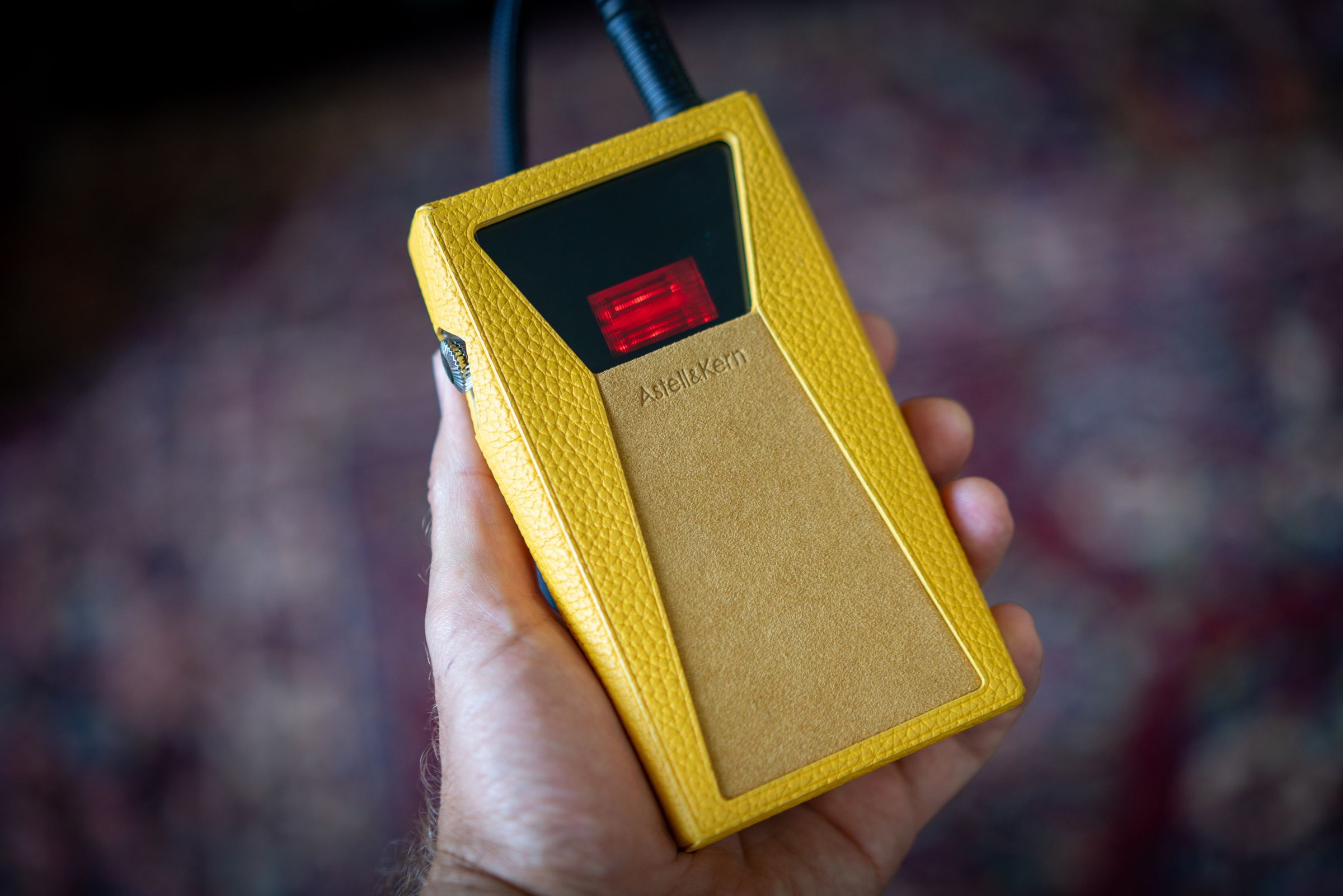
Ultimately (and obviously), the SP3000T is for audiophiles who are comfortable spending a hefty amount of money for the incomparable experience of having a hybrid digital / tube amp in their pocket. It brings best-in-class sound that’s more customizable than any player out there. The magic is in the lively, transportive tube amps, the stunning precision of the digital amps, and the absolutely wonderful hybrid modes that bring them together. Phonic purists probably don’t care all that much about my UI gripes, the archaic operating system, or even that it’s not as portable as one would hope. The sound is simply spectacular, it works flawlessly as a USB DAC, and if you have killer headphones, all of those little annoyances don’t amount to much. It’s liable to open up your music in ways you’ve never experienced. It’s enchanting.
I found myself wanting to sit my friends down, stick the Grados on their heads, and put on their favorite songs — then crank up the voltage on the tubes, just so I could see the looks on their faces as they got swept away.

![NBA 2K24 Takes Over NYC For Launch Party & More [Photos]](https://www.wazupnaija.com/wp-content/uploads/2023/09/nba-2k24-takes-over-nyc-for-launch-party-more-photos-327x219.jpg)





